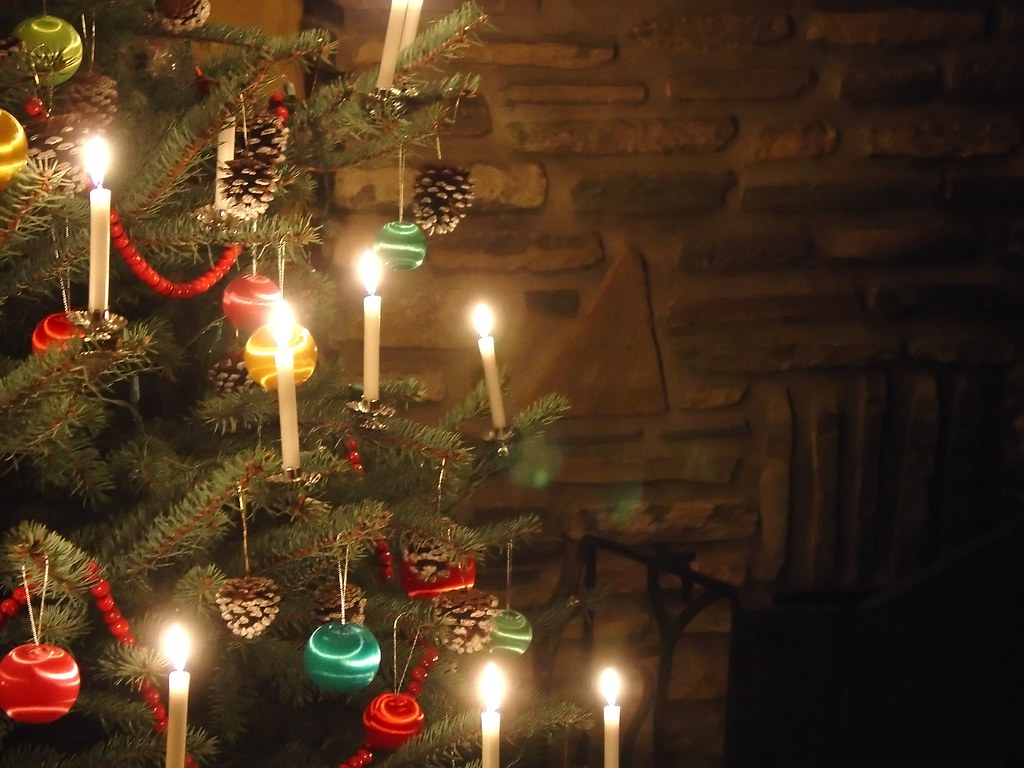 December brings with it a whole host of fun holidays and traditions. Some of these traditions, like transforming socks into decor, are a bit puzzling. Here are the origins of traditions surrounding three of the most popular December holidays!
December brings with it a whole host of fun holidays and traditions. Some of these traditions, like transforming socks into decor, are a bit puzzling. Here are the origins of traditions surrounding three of the most popular December holidays!
Hanukkah
Hanukkah is a Jewish religious celebration of the victory of the Maccabees over the Syrian army, who vastly outnumbered them, allowing them to rededicate the Second Temple which the Syrians had overtaken. A centerpiece of the Hanukkah celebration is the menorah, composed of nine candles. During the rededication of the Second Temple, there was only enough olive oil to keep the candles burning for one day. Miraculously, they burned for eight days. This is why Hanakkuh is an eight day celebration. Menorahs feature one candle set apart from the others (symbolizing the one vial of olive oil) that is used to light the other eight. The candles are set right to left and lit left to right. Another popular Hanukkah tradition is playing dreidel. A dreidel is a four-sided top. Each side of the top displays the first letter of a word of the Hebrew phrase, “A great miracle happened there.”
The roots of Christmas traditions are so entangled with other traditions that there are countless possible origins for them. It is no coincidence the timing of Christmas Day coincides with Winter Solstice. This was an intentional act on the part of Constantine to draw attention away from pagan celebrations of the solstice. To offer a more positive take on things, however, I like how Annie, a character from the show Community, articulates it: “It’s the crazy notion that the longest, coldest, darkest nights can be the warmest and brightest.”
Christmas comes with its fair share of odd traditions. Even if you’re living that #plantmom life, putting a whole entire tree in your living room is a little extreme. Like many Christmas traditions, Christmas trees are rooted in pagan solstice celebrations. Evergreens represented the hope of the return of Spring and its associated greenery. Germany is credited with establishing the tradition of bringing a tree into your house and decorating it. The historical rumor mill suggests that Martin Luther, inspired by seeing the twinkling stars through the pines, was the first to put candles in trees. As for stockings hung by the chimney with care, the root of this tradition is debated. Some argue that it is a result of a story in which Saint Nicolas leaves coins in the socks of a widow’s three penniless daughters. Others say that it originates from Norse mythology. In celebration of the Winter Solstice, it is believed that children would leave a shoe full of treats for Odin’s horse, Sleipnir. In exchange, the shoe would be filled with gifts and candy.
Kwanzaa is a truly special holiday. Unlike holidays like Christmas, whose traditions have morphed beyond traceability, the traditions and symbolism of Kwanzaa are very intentional. First created and celebrated in 1966 by American Black Power activist Maulana Karenga, Kwanaa, named after the Swahili phrase matunda ya kwanza (“first fruits of the harvest”), is an African-American holiday intended to help connect African-Americans with African traditions. The seven principles of Kwanzaa (Nguzo saba) are Umoja (Unity), Kujichagulia (Self-Determination), Ujima (Collective Work and Responsibility), Ujamaa (Cooperative Economics), Nia (Purpose), Kuumba (Creativity), and Imani (Faith). These seven principles are celebrated by lighting the seven candles in a kinara. An extra “a” was added onto the word “Kwanza” in order to make it seven letters.
Countless cultures have holidays surrounding the Winter Solstice. This post by no means shows all of them, nor does it do justice to the rich traditions surrounding the holidays it discusses (sorry — I’ve got to stay within a word count!). Luckily, there are many books in the library (for kiddos and grownups alike!) to fill you in on Christmas, Kwanzaa, Hanukkah, Winter Solstice, and so many more!
Image credits: Happy Holidays in Lights, Fauxto_digit via Flickr (license); Christmas Tree with Candles, Barta IV via Flickr (license); Seven Principles of Kwanzaa, soulchristmas via Flickr (license)




